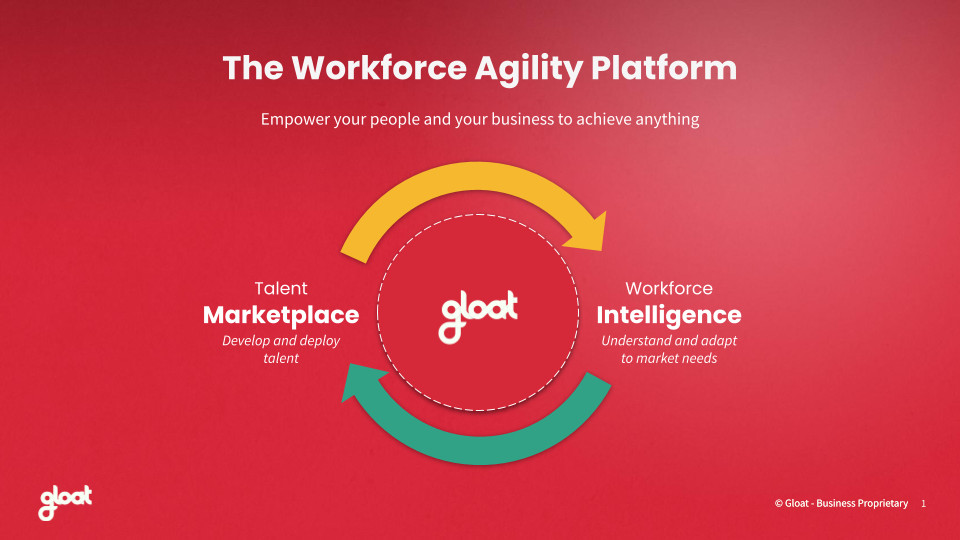Workforce agility is the answer to overcoming market uncertainty: here’s why.
Navigating the post-COVID workforce: Connecting the Great Recession, Great Resignation, and Great Uncertainty

In the new world of work, it feels like only uncertainty is certain. Momentous events outside of our control are no longer a rarity; instead, we’ve seen COVID-19, global supply chain issues, and the war in Ukraine redefine the status quo. These disruptions shocked the business economy, sending ripples that are reshaping workplaces, workforces, and work. Now, on the heels of navigating the changes caused by a once-in-a-lifetime pandemic, leaders are bracing for economic headwinds and a possible recession amid a global labor shortage and changing workforce expectations.
The warning signs can’t be ignored. Rising inflation, market turmoil, and interest rate hikes send a clear signal that a slowdown is likely. We’ve recently entered a bear market, one of the strongest indicators that a recession may be on the horizon. That means that leaders can’t shy away from making bold changes; in fact, the future of work hinges on today’s reimagination efforts. The question in front of us is how to prepare our workforce strategies and capabilities for the challenges that lie ahead.
To succeed in a world as ever-changing as ours, employers are recognizing the value of seeing beyond the status quo and pivoting from static HR practices to agile workforce strategies. Workforce agility platforms are essential tools that can cultivate the dynamic talent ecosystems required to overcome unprecedented uncertainty. Visionary organizations around the world and across industries are already tapping into Gloat’s technology, and our recent $90 million in Series D funding will rapidly expand the reach of our platform, turning workforce agility into a global reality when it’s needed most.
COVID breakthroughs become operational necessities
Today, agility is the essential competitive advantage. Yet a few years ago, the concept wasn’t on most leaders’ radars, especially when it comes to the workforce. Prior to COVID-19, business and workforce models hinged on stability and predictability.
The onset of the pandemic turned that upside down. One of the key lessons of the past couple of years is the critical importance of everything that constitutes workforce agility: adaptability, speed, resilience, and the ability to tap into all of the skills, aspirations, and interests within the workforce. The organizations that embraced pivoting to agility at speed and scale as a business survival mechanism saw incredible results compared to those that relied on the older models of business stability.
Many of these trailblazing companies had one thing in common: a talent marketplace. In response to COVID-19, Unilever and Schneider Electric, two of Gloat’s earliest partners, accelerated their platform rollouts so that talent could be redeployed swiftly to support areas of the business with increased demand. Unilever credits its talent marketplace with helping the organization staff more than 700 business-critical projects and unlock over 26,000 hours in two months. Since implementing the platform, they have recorded 750,000 unlocked hours which have been redeployed to business-critical projects.
Beyond immediate response efforts, these organizations gained the insights and visibility they needed to overcome the challenge that soon followed: the Great Resignation. While many businesses saw turnover rates soar, leaders who tapped into the talent marketplace encountered a more positive and promising reality. As Seagate’s Chief Human Resources Officer, Patricia Frost, explains, “We haven’t seen the Great Resignation at Seagate. The game-changer for us is this journey we’ve been on with Gloat. Employees have their careers in their hands and they can see vertical and lateral movement possibilities.”
Market uncertainty and the need for workforce intelligence
Workforce agility platforms can also help companies adapt and thrive through economic headwinds. When organizations start hiring fewer people, they must position their current employees to be productive and take on new roles and projects. Beyond sticking to rigid, vertical career ladders, people are empowered to create portfolios of multi-directional development opportunities, broadening their skill sets, and in turn minimizing the company’s overall talent acquisition costs.
Yet, doing more with less is exceptionally challenging. Leaders need to make high-impact decisions that will shape the future of their organization. And to do that strategically, they need a workforce intelligence solution that can analyze thousands of constantly evolving skills (whether supplied by the talent or in-demand by the business), and distill crucial insights for strategic workforce planning.
Gloat’s workforce agility model combines our AI-powered talent marketplace with workforce intelligence, so businesses can navigate through and beyond the recession. Our platform enables leaders to do more than quickly redeploy and reallocate employees; it empowers them with the insights they need to make the talent management decisions that will set their business apart. At the core of our workforce intelligence solution is the ability to produce real-time job architectures and skills inventories, which are updated automatically. Jobs and skills reports become outputs, not inputs, of the system, enabling business leaders, HR business partners, and analytics specialists to spend more time strategizing (and less time organizing and updating data.)
The potential economic recession raises the stakes for every choice that gets made. Although some leaders may hope that the downturn signals the end of the Great Resignation, quit rates continue to hit record highs, even amidst market uncertainty. Consequently, no business can afford to be complacent when it comes to employee engagement.
Employees must believe that it’s worth staying with your organization through good times and bad; otherwise, you won’t have the talent you need to thrive when things turn around. Many businesses faced this exact challenge during the 2009 Great Recession. Reduced training budgets during the peak of the financial crisis gave way to skill shortages and hyper-competitive hiring practices in its aftermath. Organizations shouldn’t make the same mistakes this time around.
Meeting the moment goes beyond roadmaps
There’s one more misconception that businesses can’t fall into: equating putting something on a roadmap with having it today. It’s similar to saying you’ll install a safety raft for a boat that’s already in the middle of the ocean; once you’re out at sea, it’s too late.
Since we know we’re going to be navigating rough waters, organizations need the proactive systems and tools in place today. Businesses that merely have a workforce agility platform on their roadmap won’t be able to move work and talent around to meet emerging challenges. As a result, they might not be able to weather the storm quickly enough to tap into the plans they’ve made for the future.
In contrast, organizations that are harnessing workforce agility platforms—combining talent markets and workforce intelligence—are already realizing the benefits, as we’ve seen firsthand here at Gloat. Schneider Electric has unlocked more than 200,000 hours and generated more than $15 million in productivity gains and reduced recruitment costs; productivity improved by 41% at Unilever. In total, more than one million end-users have leveraged our workforce agility platforms, leading to overall savings approaching $500 million.
What happens when workforce agility goes global?
There’s little doubt that today’s slowdown is more than a blip on the radar; all signs indicate that we’re on the precipice of some serious economic headwind. And although there are still plenty of unknowns, it has become clear that the reimagination agenda set in motion by COVID-19 needs to continue.
In fact, it’s time to take it one step further. We need to look beyond the lessons learned during the pandemic, the Great Resignation, and the last Great Recession to recognize the common threads among these events: choice, talent agency, potential, and workforce agility. These same themes will be central to thriving during uncertain times, as our partners at trailblazing organizations like Schneider Electric, Unilever, and Seagate have demonstrated.
As businesses see the game-changing results these pioneering enterprises are achieving, demand for workforce agility platforms is accelerating. With Gloat’s $90 million in Series D funding fueling our growth, businesses around the world will be able to transition beyond traditional transaction and compliance-focused HR practices and embrace workforce agility as the new mainstream.
A series of crises, shifts, and disruptions is a terrible thing to waste. Now is the time to accelerate and implement workforce agility platforms and solutions to navigate the economic, supply chain, and workforce and workplace shifts, weather the turbulence, and pave the way for future success.





